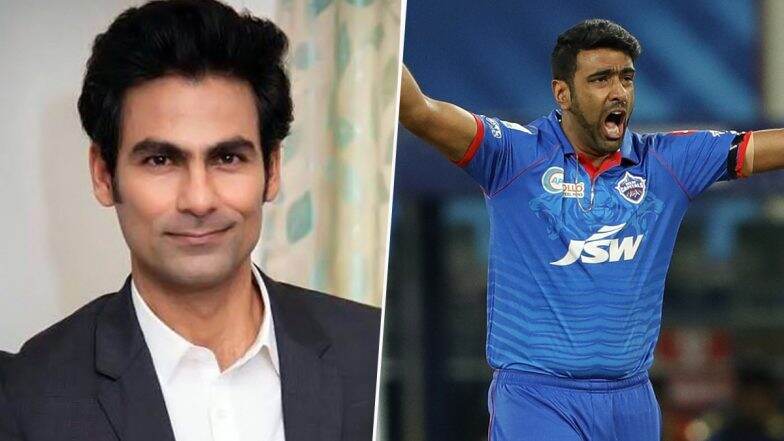
- Select a language for the TTS:
- UK English Female
- UK English Male
- US English Female
- US English Male
- Australian Female
- Australian Male
- Language selected: (auto detect) - EN
Play all audios:
Bettmann/CORBIS Thousands were there to hear Martin Luther King Jr. speak about a dream; six reflect on that experience 50 years later. On Aug. 28, a hot, humid day more than 50 years ago,
some 250,000 people who had assembled on the grounds between the Lincoln Memorial and the Washington Monument fell silent for the climax of the largest demonstration Washington, D.C., had
ever seen. Then, in an address that many scholars rate as the most important political speech of the century, Rev. Martin Luther King Jr. laid out his dream, a vision of equality for the
entire nation. RELATED LINKS * Martin Luther King III on His Father's Legacy * Lifting My Voice - Charlayne Hunter-Gault * Quiz: How much do you know about African Americana? JOIN AARP
TODAY — RECEIVE ACCESS TO EXCLUSIVE INFORMATION, BENEFITS AND DISCOUNTS King's speech "really shifted public opinion about the civil rights movement" and engaged white America
in the struggle, says William P. Jones, associate professor of history at the University of Wisconsin-Madison. Delivered in the cadence of a charismatic preacher, King's simple message
— equality for all strengthens a nation — instilled in many a deep sense of hope and a feeling of responsibility to do their part to fulfill King's dream. "Are we moving closer to
King's dream or further away? It's a mixed answer," says Clayborne Carson, a history professor at Stanford University, editor of King's papers and author of the memoir
_Martin's Dream_. "For many Americans the dream has remained elusive." Perhaps those who were there can best explain the full impact of the speech that forever changed the
country. Meet six of them and read their stories. Jared Soares Edith Lee-Payne, March on Washington - Today. EDITH LEE-PAYNE, 62, DETROIT THEN: 12-year-old birthday girl, captured in a
well-known photo of the march NOW: Community activist, nonprofit director, marketing consultant Edith Lee-Payne lived in an integrated neighborhood in Detroit when she came to Washington for
The March. In kindergarten, she had played with dolls with her white neighbor. At the lunch counter, both black and white waitresses served her. But while at The March on her 12th birthday
with her mother, she learned about segregation. "I just could not grasp why things were so different for other people," especially in the South, says Lee-Payne. "It should be
the same for everyone." Singer Lena Horne recognized Edith's mother, a former dancer who had toured with Horne, and together they recounted stories the girl had never heard, such
as seeing black people hanging from trees and using segregated hotel entrances. Lee-Payne's epiphany shows in the photo above, which would later become an icon of the march and appear
in books, brochures and news stories. But Lee-Payne never saw the ubiquitous photo until almost five years ago. Now identified, her portrait offers her opportunities to discuss the day that
cemented her desire to fight injustice. "It's an every-single-day process," she says. BE AN E-ACTIVIST. SIGN UP FOR THE AARP ADVOCATE E-NEWSLETTER » Jared Soares Gordon
Gundrum, March on Washington - Today. GORDON H. "GUNNY" GUNDRUM, 77, GRAFTON, N.Y. THEN: U.S. Park Service Ranger NOW: Retired New York state trooper, beekeeper and farmer Maybe
his Marine Corps spit-and-polish got him selected to guard King on the podium, surmises Gordon H. Gundrum. In any case, "Gunny," the sole white person standing near King in many of
the day's photographs, didn't speak publicly about the event until his love of history persuaded him to share his memories. "I was, deep down inside, scared looking at
thousands upon thousands of people," he says. "But it was a calm crowd with a cause that was stirring. When you looked at the crowd, you didn't see blacks or whites. You saw
America." Though always a believer that people should be treated equally, Gundrum insists he wasn't immersed in civil rights until that day. For him, hearing King's message
"was like being introduced to a poem that really got to you." The experience shaped how he came to treat everyone, from hippie hitchhikers to black motorists. "You always gave
everyone the benefit of the doubt that they were good people. And you were there to protect their rights. Jared Soares Rosemary McGill, March on Washington - Today. ROSEMARY MCGILL, 71,
ROCKLEDGE FLA. THEN: Teenage civil rights protester NOW: Multicultural/legacy specialist at Eastern Florida State College, retired city bookkeeper The multiracial makeup of The March stunned
Rosemary McGill. She expected to see only blacks from the South, like her — and was surprised by the kindness and support from whites. From her seat on the grass near the Washington
Monument, she saw whites sharing their food with blacks. Even a white girl suggested they sit back-to-back so they'd both be more comfortable. Her parents' generation lived under
Jim Crow laws but her generation was better educated, When she was a teenager, McGill began attending demonstrations. "We thought, who's a Klansman but a man in a white
cloak?" At one protest, she saw a black mother with a baby in her arms knocked to the ground and a Klansman hitting the woman's young son with the butt of a rifle. "I realized
I had truly learned to hate my white counterparts." The March changed that. As she walked down Pennsylvania Avenue, she assumed three whites in her row were agitators. When they
started singing "If I Had a Hammer," she recognized folksingers Peter, Paul and Mary, who had come to protest too. That day, she let go of the "malignant cancer" of hate.
Jared Soares C.T. Vivian, March on Washington - Today. REV. C.T. VIVIAN, 91, ATLANTA THEN: Baptist minister on the executive staff of King's Southern Christian Leadership Conference
(SCLC) NOW: President, SCLC, head of the C.T. Vivian Leadership Institute Looking out on the crowd, Rev. C.T. Vivian thought, "We had built a movement from nothing to something. I
thought when we left there, we would be in a far better position to fight racism." Even before King, Vivian had adopted nonviolence as a way to show whites "our humanity and their
lack of it." The King confidant had experienced that inhumanity firsthand. In one famous incident captured by television cameras, a Selma, Ala., sheriff broke his finger hitting Vivian.
During the Freedom Rides, police beat Vivian so viciously with a billy club that his hands went numb trying to protect his head. Vivian, however, chooses to focus on the victories.
"You cannot name an institution in America that wasn't changed by the civil rights movement," he says. But racism, poverty and war continue to worry him. "I'm still
at it. True change does not come quickly." JOIN AARP NOW — RECEIVE ACCESS TO EXCLUSIVE INFO, BENEFITS AND DISCOUNTS Jared Soares Rowland Scherman, March on Washington - Today. ROWLAND
SCHERMAN, 78, ORLEANS, MASS. THEN: Freelance photographer NOW: Veteran photographer whose work has appeared in_ Life, Look, Time, National Geographic, Paris Match_ and _Playboy_ When
26-year-old Rowland Scherman asked to cover The March for the United States Information Agency, he had no idea that he would have such access to history. As an official March photographer,
he was able to get close to the famous — including Paul Newman, Marlon Brando, Joan Baez, Bob Dylan and Jackie Robinson — and had a bird's-eye view of Martin Luther King Jr. during his
historic speech. To get a better view, he climbed a ladder near the Lincoln Memorial and captured panoramas of thousands of attendees on the Mall. "No one in America had ever seen a
crowd like that before. It was awe-inspiring." He also photographed a 12-year-old girl who seemed to be absorbing King's words with a particular intensity. Scherman believes her
expression conveyed thoughts about the state of the country at the time and the direction it was headed. The photograph, which would become emblematic of The March, appeared in textbooks,
brochures and was cataloged in the National Archives. He didn't get the name of the little girl that day but was able to meet her 50 years later. "Edith Lee-Payne is still
beautiful," he says. _— Reported by Amanda Lucidon_ Jared Soares Phil Stone, March on Washington - Today. PHILIP STONE, 69, NEW YORK THEN: Teenage hitchhiker NOW: Manhattan criminal
defense attorney As soon as Philip Stone heard about The March on Washington, he knew the event would be important and informed his parents he would be hitchhiking down to the nation's
capital. The March served as the first time he had ever seen large numbers of blacks and whites together, an unusual sight for the New York native. "There was de facto segregation
everywhere," says Stone, who is white and was living in the Bronx at the time. He understood his life experiences were different from the struggles of black Americans. "I was
privileged to be there. Even I knew that at 16." There alone, he joined various gatherings and parties and waded through the masses of people trying to absorb every moment. "There
was just this feeling running through the crowd like, 'Here we are. There are a lot of us.' I thought it was world-changing. I thought 'After this, everything has got to get
better.' " Following The March, Stone became active in civil rights, participating in demonstrations and boycotts, and eventually made civil rights the focal point of his legal
career. "I've been a criminal defense attorney for more than 30 years and I still fight daily to retain basic civil liberties for people." _Tamara Lytle is a freelance writer
based in Washington, D.C._ -------------------------





:max_bytes(150000):strip_icc():focal(719x209:721x211)/Luke-Combs-45cee2619c754f01839e1d3b2acc9c6a.jpg)
